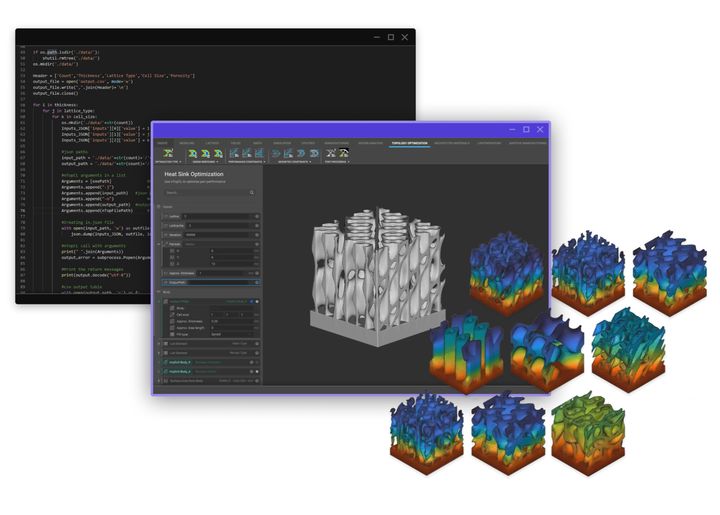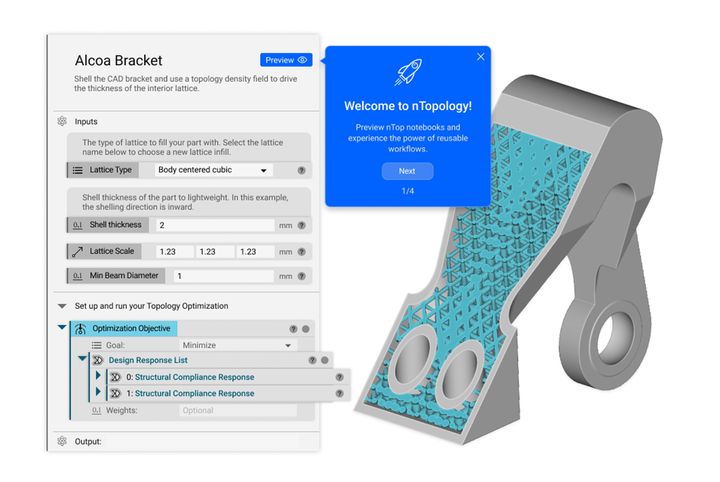
nTopology found a way to dramatically speed up their 3D modeling operations.
The company has been developing a highly advanced CAD system that seems to fit extremely well with 3D printing because it overcomes one of the major barriers and enables full use of 3D printing technology.
The major advantage of 3D printing is its ability to build objects with arbitrary and complex geometries, which could be challenging or even impossible to make in traditional making systems. While that’s a tremendous advantage, it can only be accessed if you can design the required complex 3D models.
In the usual 3D modeling tools this can be extraordinarily difficult, because most systems internally represent complex objects as collections of solid objects or, in the case of STL, a collection of triangles to represent the outer “skin” of an object.
Unfortunately, as the 3D models get more complex geometries, the number of these internal objects explodes exponentially, and they become difficult to process. CPUs must chew through endless lists of internal objects, even to adjust the view, let alone change the model’s geometry.
Enter nTopology, which has developed a completely different way of internally representing a 3D model. Instead of lengthy lists of simple objects, they use complex mathematical formulae to represent the geometry. These can be re-computed in lightning speed, resulting in their ability to very rapidly make changes to even the most complex 3D models that would otherwise be impossible to process.
It’s pretty shocking to see how fast nTopology can be, but believe it or not, it’s getting even faster now with the latest feature: GPU.

A GPU, or “graphical processing unit”, is an array of processing elements nominally intended to handle the graphics processing on a display. However in recent years those sometimes idle processing elements have been repurposed for other computationally-intensive work, such as AI or machine learning.
Now it seems that nTopology has developed a GPU version of their nTop system that runs faster by using GPU power.
Here’s a short video showing the effects of the GPU feature. Note that it is recorded in REAL TIME:
This is quite incredible to watch, as the highly complex alterations to the design seem to happen nearly instantly. On other 3D systems this type of operation could take a very, very long time, if it was doable at all. Many systems could choke on lack of memory to process this complex manipulation.
The implication of this development is that it could be possible for many more complex designs to be attempted. With slower systems the rate of design iterations would be far slower, and thus design compromises could occur. By speeding the processing, a designer could undertake many more iterations to hone in the final design, likely producing a superior result.
nTopology said:
“We are excited to share with you nTopology 3.0. This major software release introduces real-time visualization with GPU acceleration; a technology breakthrough that will fundamentally change how nTop users interact with the software. An interactive preview of nTopology 3.0 is available for everyone to download by creating a free nTop account.”
If you’d like to see this speed in action, I encourage you to give their preview a test. However, make sure you have an appropriate desktop machine to accommodate the beefy needs of this powerful software.
Via nTopology
